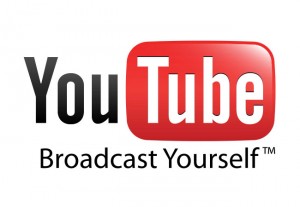By
Rob ScottOctober 23, 2013
In addition to the new iPads unveiled yesterday, Apple made several announcements regarding its hardware and software products. The new MacBook Pro and MacBook Air laptops will go on sale immediately, while the $2,999 Mac Pro desktop will ship before the end of the year. Apple’s iWork and iLife suites of office and creative software are now free with every hardware purchase. Another surprise is the company’s decision to offer its Mac operating system, OS X Mavericks, as a free download. Continue reading Apple Takes New Direction by Offering Free Operating System
By
Chris CastanedaSeptember 10, 2013
Facebook recently announced two new API tools for TV networks and news outlets to access its user data, offering measurements such as the number of statuses mentioning certain celebrities or which gender is interested in a specific news story. The APIs will give TV networks and news media more insight into their audience and programming. The features, Public Feed API and Keyword Insights API, are being offered to CNN, NBC, Sky TV, BuzzFeed, The Guardian, Slate and social media analytics firm Mass Relevance. Continue reading Facebook Offers User Data to TV Networks and News Outlets
According to a new Gallup poll, in which Americans were asked what they consider to be their main source of news about domestic and global events, 55 percent indicated television is their primary resource, while 21 percent said they mainly use the Internet. Nine percent said newspapers or other print publications, followed by radio at 6 percent. This poll marks the first time Gallup has measured Americans’ media habits with this open-ended question. Continue reading Television Remains Primary News Source for Many Americans
In its effort to become a news destination for young adults, BuzzFeed announced it will debut “CNN BuzzFeed” today, a new YouTube channel based on CNN reporting. It plans to feature current and archival content (about three videos a week to start), designed for sharing via social media platforms. BuzzFeed already has several YouTube channels, but the CNN partnership marks its most comprehensive with a traditional media company. Continue reading CNN BuzzFeed to Launch Today: Targets 18-34 Demographic
Google’s Internet-connected Glass device will soon feature seven new apps, which the company hopes will makes the glasses more functional. The Glassware apps, announced at the I/O developers conference yesterday, include Twitter, Facebook, Tumblr, reminder notes from Evernote, news alerts from CNN and fashion features from Elle. The seven additions join Path and The New York Times as the only apps currently available on Glass. Continue reading Glassware: Google Announces New Apps for Glass Device
By
emeadowsApril 25, 2013
The live streaming site Ustream increased its viewership recently with the help of citizen journalism. During the manhunt for Boston bombing suspect Dzhokar Tsarnaev, live information was streamed from a police scanner via the free platform. The site drew an audience of 2.5 million, with 265,000 simultaneous viewers at its peak moment. Notably, nearly half tuned in from their mobile devices. Continue reading Citizen Journalism: Ustream Covers Boston Manhunt Live
According to Nielsen’s Vice Chair Susan Whiting, who was a part of a panel discussion analyzing disruption in traditional media usage at the Mobile World Congress in Barcelona on Wednesday, consumers are not abandoning one platform for another. Instead, they’re spending more time than ever viewing and reading news and entertainment content, using mobile devices as an access point. Continue reading Mobile Activity on Upswing, Opens Doors for Mobile Ad Biz

By
Rob ScottApril 3, 2011
CNN reports that the debate regarding whether Google is a media company or tech company — a publisher of content or indexer of content — may soon be over, as the company prepares to morph YouTube into an online “studio system” for a new era of content production. CNN suggests Google is already a media company, but the question should more accurately address what kind of media company; perhaps “one that operates by the economics of the Internet, with no legacy ties to the economics of television, movies, or publishing.”
 In recent months, Google has been investing heavily in its YouTube division, including: the hiring of content execs from Netflix and Paramount, recent acquisitions to enhance its current quality of offerings, plans to reportedly spend $100 million on developing new celebrity “channels,” and more. Google hopes to expand YouTube’s dominance in the UGC market to include niche programming and mass entertainment.
In recent months, Google has been investing heavily in its YouTube division, including: the hiring of content execs from Netflix and Paramount, recent acquisitions to enhance its current quality of offerings, plans to reportedly spend $100 million on developing new celebrity “channels,” and more. Google hopes to expand YouTube’s dominance in the UGC market to include niche programming and mass entertainment.
Of course, what makes the online video resource unique in terms of serving as a content provider, is that it has very little overhead. As compared to other media companies that are more directly involved in actual production, YouTube’s marginal costs are nearly zero. Advertising revenue is earned the same way whether viewers are clicking on a cute video about someone’s cat — or a professional basketball game (Google is in talks with the NBA and NHL to show live games on YouTube).
YouTube also enjoys the potentially infinite number of specialty channels the Internet provides, an approach that is not practical for cable. It may not matter from day-to-day which channels do well and which do not. As long as YouTube makes the platform available, the content can regularly evolve.

